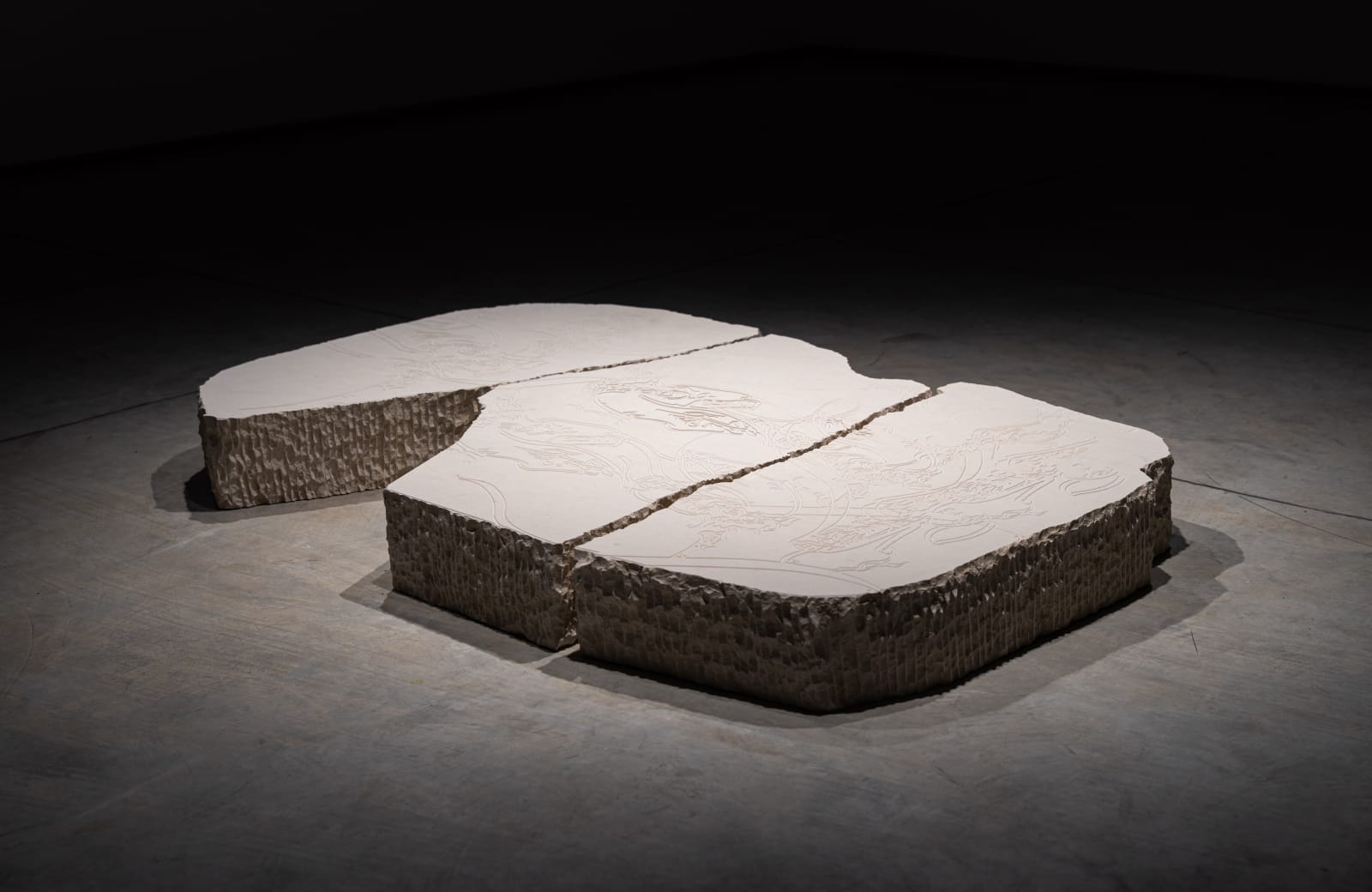










Monia Ben Hamouda Tunisian, Italian, b. 1991
Further images
-
(View a larger image of thumbnail 1
)

-
(View a larger image of thumbnail 2
)

-
(View a larger image of thumbnail 3
)

-
(View a larger image of thumbnail 4
)

-
(View a larger image of thumbnail 5
)

-
(View a larger image of thumbnail 6
)

-
(View a larger image of thumbnail 7
)

-
(View a larger image of thumbnail 8
)

-
(View a larger image of thumbnail 9
)

-
(View a larger image of thumbnail 10
)

-
(View a larger image of thumbnail 11
)

The Rosetta Stone, which presented familiar yet initially incomprehensible scripts, echoes Ben Hamouda’s work in creating a visual language that is simultaneously recognizable and enigmatic. This reflects philosopher Abdelbebir Khatibi's notion of a "plural language" that transcends binary cultural identities. Her approach to linguistic architecture parallels the monumentality of language history. Her use of ancient inscriptions alike embodies the weight of cultural memory and the power of words to transcend time. In the artist’s work, language becomes a monument that simultaneously evokes recognition and eludes complete understanding. It stands before us like a monument to memory, reflecting the paradox of a language that exists in form but remains shrouded in mystery - a testament to the enduring yet elusive nature of our cultural heritage.